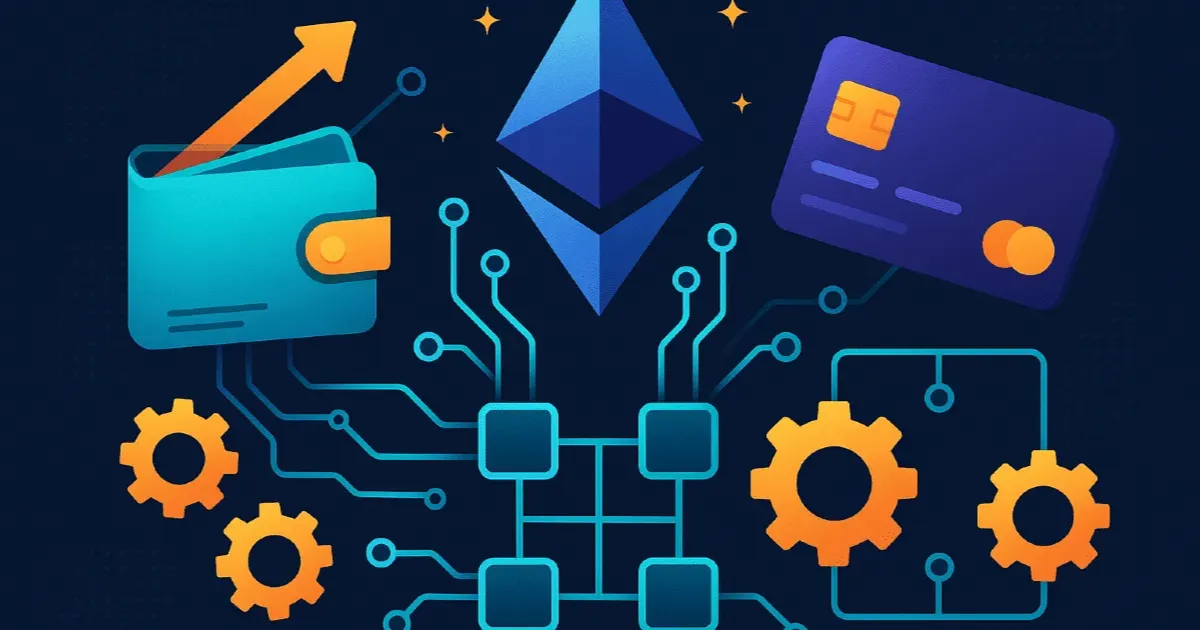By allowing users to express their desires while the system manages the intricate details behind the scenes, Intents transforms the cumbersome user experience of cryptocurrency. Agent-driven financial automation and widespread adoption are made possible b
Today, try using cryptocurrency to make a little purchase. Your transactions get stuck or fail, forcing you to figure out wallet extensions, parse lengthy hexadecimal addresses, choose networks, sign transactions, compute erratic gas fees, and do all of this over and over again.
It is occasionally necessary to bridge assets across chains as well. Only a user with technological know-how may overcome this challenge.
In contrast, Apple Pay only requires one tap to execute a transaction in traditional finance.
The bar is there. The user experience with cryptocurrency is still trapped in the dial-up era.
A more straightforward approach: Simply express your desires
Intent-based architecture completely changes the mental model, eliminating the need for users to understand the workings of swaps, bridges, and signature flows. With intents, users may simply state their objectives, such as "I want to pay $5 for this coffee," and the system will take care of the rest.
In the context of cryptocurrency, "intents" refers to a broad range of outcome-driven interactions, including atomic cross-chain swaps and a fundamental paradigm for streamlining all user operations.
Under the hood, instead of using typical solver networks, trades are carried out by specified players, frequently market makers, using a high-speed, trust-minimized infrastructure.
Without revealing wallets, gas costs, or chain complexity, users launch outcome-driven queries, and the back end manages routing, execution, and settlement. The end effect is a smooth, purpose-driven experience that maintains decentralized assurances while concealing infrastructure.
Instead of being action-driven, cryptocurrency becomes outcome-driven.
Get rid of the wallet mold
Users' interactions with cryptocurrency have long been defined and limited by the wallet-centric paradigm.
There is already a new type that does away with the necessity for wallets completely. Passkey-based systems have removed the need for passwords, private key management, and seed phrases by enabling users to authenticate using well-known tools like Face ID or Touch ID.
More significantly, an intent-based strategy is independent of chains. To transact or take part, users do not need to be onboarded to a particular blockchain. Sharing a signed link makes sending cryptocurrency easy. No wallet setup, no app installations.
In the end, this compact, easy-to-use interface is crucial for promoting widespread adoption.
Recreate well-known financial situations
Because they put the customer experience first, centralized exchanges like Binance took over the market. With similar settlement speeds but with significant variations, modern intent-based infrastructure follows the well-known path of deposit, trade, and withdrawal flow.
Intentionally, smart contracts work as the levels of custody and settlement, keeping safe on-chain records of user balances and—above all—publicly accessible proof-of-reserves. For the first time, decentralized trading is feasible due to the extremely cheap fees of scalable blockchains.
Additionally, this architecture is not limited to traders; it is designed to offer Web2-style payment rails together with scalable, sharded, on-chain infrastructure for use cases that range from purchasing flights to DeFi swaps.
AI and intents are a natural combination
AI assistants are the new interface layer, whereas intentions are the new execution layer.
Think about instructing your helper to "Stake my SOL for the best yield" or "Send $50 in BTC to my brother." You're expressing a purpose, not keeping track of wallets, signing transactions, or worrying about MEV. Your request is parsed by the helper, fulfilled by the solver network using intents, and the outcome is flawless.
AI and intentions work together to completely rethink the user experience of cryptocurrency, preserving the fundamental principles of decentralization while ultimately matching—and surpassing—the elegance of traditional banking.
Intents are particularly important infrastructure for an AI economy that is becoming more and more agent-driven and microtransaction-based. People lack time and are lazy. This explains why subscription-based businesses prosper while microtransaction business models fail: Authorizing payments on a regular basis is difficult, and it's simple to forget to terminate your membership after you're done using the service (especially when services purposefully make it difficult to do so). The current situation won't continue.
AI systems think far more quickly. They will be able to automate a simple, concrete function: price and fee optimization. Services that offer microtransactions will thrive once AI agents are widely used, merely because all agents will prefer them to subscriptions.
Now is the time for blockchain technology to shine. Conventional payment methods, such as Visa and Mastercard, are not designed to handle conditional and high-volume microtransactions. Higher-level primitives for various financial transactions, including currency exchange, escrowed agreements, streaming payments, and direct payments, will be made possible by intents.
In addition to payments
Although payments are the most obvious initial use, retail isn't the only purpose. They remove the intricacy from a range of transactions involving multiple steps:
- Performing multi-hop chain swaps
- Overseeing portfolios of cross-chain assets
- Setting up limit orders in DeFi that are gas-efficient
- Automating yield techniques according to changing circumstances
This is the framework for the upcoming generation of cryptocurrency applications, which are intended for all users, not just degen power users.
The way ahead
For years, the unmanageable user experience of cryptocurrency has been the main concern. Finally, intents mark a sea change in the development of our sector. They signal a change from protocol-centric design to user intent-focused interfaces.
Particularly in an AI-driven future, intents are outcome-driven, intuitive, and represent how people truly wish to transact.
The actual success of blockchain will occur when users aren't even aware that they're utilizing it, not when they comprehend how it operates.






